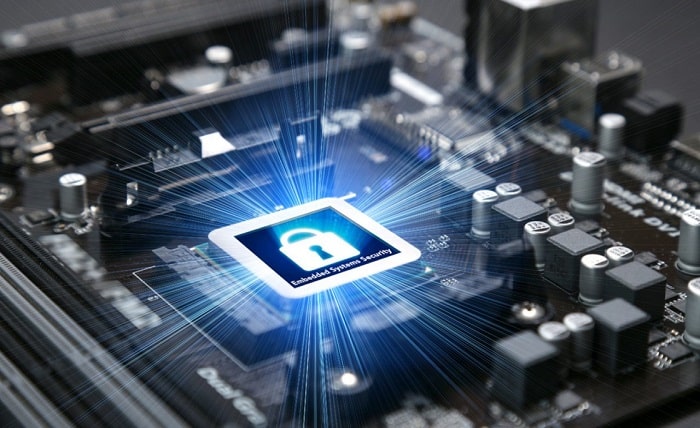Best Practices and Protocols to Ensure Security in Embedded Systems

Our daily lives are becoming more and more reliant on embedded systems. Embedded systems are found in everything from industrial machinery and automobiles to smartphones and smart home appliances. Nevertheless, these systems become vulnerable to a variety of cyberthreats as they are connected to networks and the internet. Protecting sensitive data and averting cyberattacks require embedded it solution to be secure. Some of the best practices and protocols that can be used to improve embedded system security are covered in this article.
Use Secure Development Practices
Secure development practices are essential to build security into embedded systems right from the design phase. One of the key practices is threat modeling where developers analyze potential threats and vulnerabilities to understand security risks at a early stage. This helps prioritize security controls to implement. Least privilege access control restricts each process, user, device or service to minimum necessary permissions. This prevents malware or attackers from accessing sensitive data or critical functions if one account is compromised.
All user inputs and data sources need to be validated and sanitized to remove any malicious characters or sequences. This helps prevent code injection attacks where an attacker can insert and execute arbitrary code. Static and dynamic application security testing tools are used to analyze source code and find vulnerabilities even before deployment. Static Application Security Testing (SAST) scans source code for flaws while Dynamic Application Security Testing (DAST) tests the application like an attacker while it is running. This helps fix issues in development phase itself.
Developers must undergo regular security training to keep skills and knowledge updated. Frequent security code reviews by dedicated teams ensure best practices are followed and vulnerabilities are not introduced. Even small bugs or flaws ignored in development can become big security issues later. Timely reviews and fixes make systems robust. These practices may require additional efforts initially but help strengthen security fundamentals right from the start. It is more cost effective than fixing vulnerabilities post deployment.
Implement Device Identification and Authentication
Unique device identification is crucial for embedded systems security. Each device must have a unique and permanent ID that is stored securely, usually burned into the firmware or a secure element during the manufacturing process. This ID should be very difficult for attackers to modify or alter. Having a unique ID allows authenticating the device and ensures it is the legitimate device. Authentication validates that the device is what it claims to be. Strong authentication using multiple factors makes impersonation attacks much more difficult. Embedded devices can use secure elements like Trusted Platform Module (TPM) chips to securely store cryptographic keys and credentials. TPM supports cryptographic operations like hashing, encryption and generation of cryptographic keys. It can be used to authenticate both the device and the user/operator to the system.
Public key infrastructure (PKI) involves the use of digital certificates that bind the identity of the device or user to their respective public keys. These certificates are signed by a trusted certificate authority. During authentication between two entities like a device and server, they can verify each other’s certificates to establish the identity of each party involved and set up an encrypted channel. The private keys remain securely stored in the TPM or other secure storage. Proper access management ensures only authorized entities can access embedded devices after authentication. Role-based access control policies restrict access to only necessary resources based on the role or privileges assigned to the authenticated entity.
Encrypt Sensitive Data and Communications
Encryption protects sensitive data by converting it into an unreadable format called cipher text. Strong encryption algorithms like AES (Advanced Encryption Standard) should be used to encrypt sensitive user data stored on embedded devices. This includes credentials, personal information, firmware and configuration files. AES keys should be randomly generated and securely stored.
Data transmitted between devices and servers over networks also needs protection. TLS (Transport Layer Security) protocol encrypts data in transit using AES and provides endpoint authentication and integrity checking. It ensures data remains encrypted from the source device to the destination server. The encrypted data should remain encrypted at rest on devices and servers as well as while being transferred. Hardware security modules can securely store and process encryption keys to decrypt and encrypt data on devices and during transmission. This protects sensitive data from unauthorized access.
Implement Secure Updates and Patch Management
It is important for embedded solution company devices to support secure over-the-air firmware updates to address any vulnerabilities discovered after deployment. The update images should be digitally signed by a trusted authority to verify their integrity and authenticity. The device can then verify the signature before installing the update. Rollback prevention prevents unauthorized downgrade to an older version. Version control ensures only the latest update is installed. Additionally, unused ports and services listening over the network should be disabled once the update is applied to close any avenues of attacks. Timely patches to vulnerabilities also need an efficient vulnerability and patch management process that involves timely vulnerability monitoring and patch development/testing before rolling out updates to devices. This helps plug security gaps in a coordinated manner.
Use Isolation and Segmentation
Isolation and segmentation techniques restrict the spread of threats even if one component gets compromised. Techniques like process isolation, memory protection units, and trusted execution environments isolate critical processes and data. Network segmentation separates functions onto different network zones based on criticality and access requirements. These techniques make it difficult for attackers to move laterally within the system.
Monitor for Anomalies
Continuous monitoring helps detect anomalies and security issues. Logs from devices, applications and network traffic need to be collected securely and analyzed for anomalies, unusual patterns and threats using security information and event management (SIEM) solutions. Monitoring helps detect intrusions, data/configuration changes, unauthorized access attempts and malware infections at an early stage for remediation. Alerts about critical issues need to be sent to security teams.
Conclusion
As embedded systems pcb design service become more connected, securing them requires a holistic approach following industry best practices. Adopting development practices, implementing authentication and encryption, managing updates securely, isolating components, monitoring for threats and responding to incidents promptly can help strengthen security posture of embedded systems. With growing security risks, it is important for organizations to prioritize security right from design to deployment and operations.




